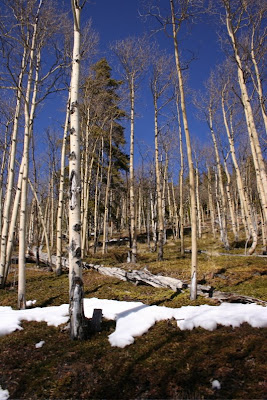Sedona is a touristy and quirky little town situated in an oasis of geologic wonders. Surrounding the town are monumental spires of spectacular red rocks. The bright orange-red rocks are more than 250 million years old. You have to have been employed since then to afford to live here, however. You can afford to visit, and should.
Whether it is panoramic views, serious gallery hopping, or new age vortex worshiping, Sedona has something for everyone. I will be here a week with my parents and who knows what we will end up doing. I shall try to blog it all. This post will become my index to which I will add links to all the posts. One advantage of traveling with my parents is that they walk slowly, so I can snap a 1,000 pictures without getting on anyone’s nerves.
Sedona is all about geology, so here is the “dirt” on what you will see if you visit.
The rocks of Sedona are primarily sedimentary, which means layered. It is sort of reminiscent of the soap scum in your bathtub if you don’t scrub it out sufficiently, it just keeps building up. About 320 million years ago, the area of Sedona lay under water in a sea, and the first layer of Sedona's rock formation came from the shells of sea creatures. The next layer arrived about 275 million years ago as sand that was eroded from ancient mountains was carried by ancient rivers and deposited in a delta. This continued for a really long period of time. Much of the colorful rocks in the area were formed this way. Their technical name is the Schnebly Hill Formation. Eventually, about 1900 feet of rock covered the entire Sedona area.
Several million years ago, the Colorado Plateau uplifted, which created numerous cracks in this broad area of sediment. Water flowed in, sediment flow out, and we are left with these wonderful formations. The formations survived the process because they are capped with a protective layer of white limestone.
This rock is red because of iron oxide. Iron oxide drains through the porous sandstone and coats the grains, giving it a rich red color. Outside of Sedona’s unique oasis the rest of this part of Arizona consists of bleak rolling hills covered in desert shrubs. It is no wonder that people are drawn here by the millions. Take note oh millions, there are only about 500 parking spots in town so most of you will be driving around looking an opening, creating quite a traffic snarl. At least there is a pretty view to keep you entertained while at it.
 Looking west from Upper Red Rock Crossing Road. The two small spires in the middle of the picture are near the famous chapel.
Looking west from Upper Red Rock Crossing Road. The two small spires in the middle of the picture are near the famous chapel.To make matters worse, at least for us, is that the bright folks in Sedona have decided to expand the major road, highway 179 that runs through town. So for the moment there is a very unattractive and highly annoying cone zone impeding the entrances to all the galleries. In the end though it will be much improved.
Our first day consisted of some scenic drives to visit ancient Indian sites. That will be the subject of the next few posts.
Trip Index:























































